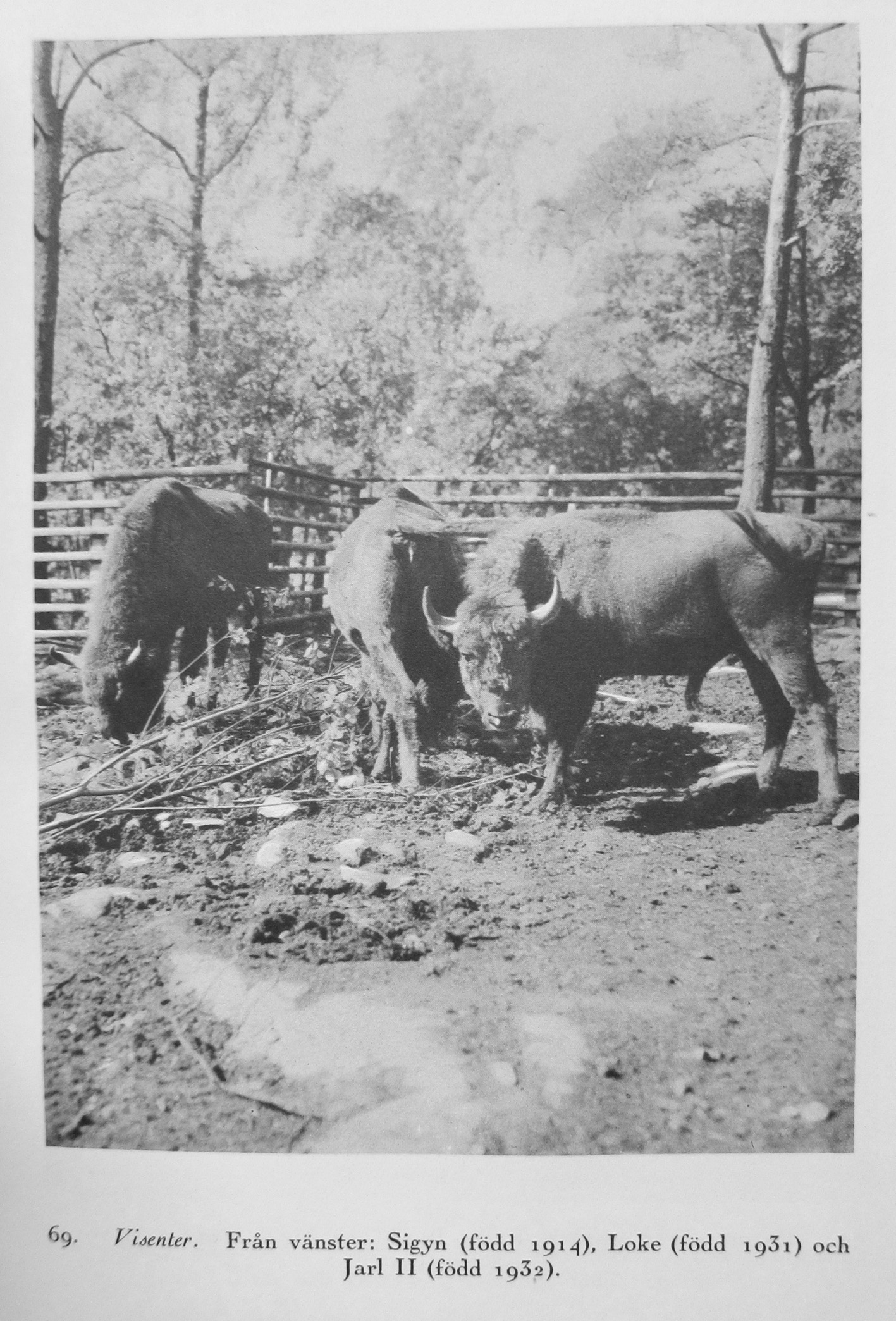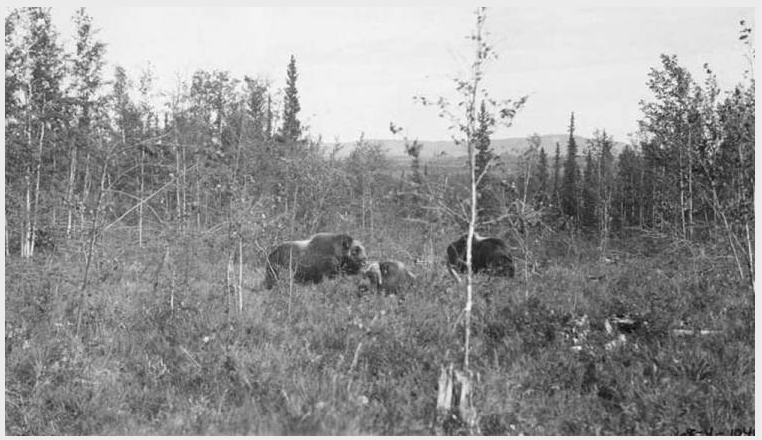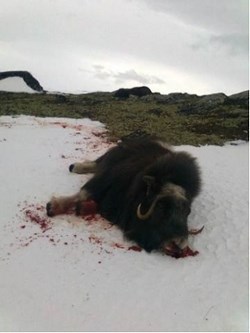
What’s in a name?
There’s follow-up news about the wisent herd that’s been released in Germany this year: Quintus has been born. He is the first calf has been born outside of the corral area to the newly reintroduced herd.
Quintus. I’m assuming he’s so named because he is actually the fifth calf born to the herd, although he is the first born “in the wild”. Quintus isn’t a bad choice since it captures an important fact about him. I wonder if the first through fourth also got Roman style names based on their numerical birth order. But why not a German name? Or even more importantly, why name him at all?
Historically the reintroductions of muskox in Norway and Sweden have both featured the naming of animals. The first calves caught in Greenland and brought to Sweden for “acclimatization” were named were named Hjalmar and Lotte. The Myskoxcentrum breeding stock all have regular personal names like Helga and Härje, although somewhat oddly one of the bulls is named “Ullriks kompis” which simply means Ullrik’s friend (Ullrik is another of the bulls). The calf born to Naessa earlier this month did not immediately get a name — but this was considered a news worthy part of the story. In other words, there was an assumption that we expect that it would have a name and we, the interested readers, would want to know what it was.
Naming animals is of course quite common for pets, but personal names are also used for zoo and circus animals that interact with visitors. The closeness to humans appears to be important when deciding whether or not to name an animal. Sune Borkfelt has recently argued that we regard an animal with a name differently than one without it:
The name is instrumental to people recognizing the animal as an individual and regarding him or her with special fondness and this can influence the fate of an animal significantly.
Borkfelt brought up the cases of baby animals that were “saved” because they were named. Instead of being surplus or unwanted, these animals with a name became wanted and were kept alive.
Not naming can of course lead to the opposite. Mary Phillips studied the lack of name-giving to laboratory animals. She found that scientists often thought of laboratory animals as ontologically different from pets or wild animals “based on the purpose for which the animal was intended” (her italics). In this case laboratory animals are intended for research, which she found presupposed a “deindividualized, anonymous, creature with no personal history.”
The personal history aspect is key here. As Phillips observed,
In giving an animal a name and using that name to talk to and about the creature, we interactively construct a narrative about an individual with unique characteristics, situated in a particular historical setting, and we endow that narrative with a coherent meaning.
Naming allows the writing of biography, storytelling. We can know and tell the story of Hjalmar’s capture, is transport to Sweden, his death three years later, and the eventual donation of his body to the Natural History Museum. He is a he with a name. Likewise, the stories of Sir Roger the Elephant and Chi-Chi the panda are easier to tell than the unnamed mandrill or harrier skin in the collection The Afterlives of Animals. The stories of the endlings like Benjamin the thylacine, Martha the passenger pigeon, and Lonesome George the Piñata Island tortoise get a personal feel – they become stories of individual loss because the animals have a name.

But this doesn’t really address why you would name an animal intended to be released into the wild. These are not animals confined to a zoo cage that children will gaze at with wonderment and ask about. These are not pets to be in companionship of humans. If anything, animals destined for reintroduction are exactly the opposite – they are supposed to be away from humans.
But I think the answer lies in that they have to be with humans first. Muskox and European bison are part of breeding programs that require the keeping of genetic trees and pedigree books to avoid genetic bottlenecks because of the limited number of individuals. According to the Białowieża National Park summary about the European bison pedigree book they maintain, “For convenience, breeders of newborn animals are supplied with the specimen’s name at the time of registration in the Book.” But more than convenience, I think the naming has to do with the breeders being close to the animals.
This is entirely different than reintroductions where the animal is caught in the wild and then moved to a new location. Beavers in Sweden never got personal names, even though they were clearly thought of as special and sponsors of the reintroduction were named. Beavers are free to wander after release; they won’t be tracked and recorded the way muskox or wisent are. They are supposed to disappear, naturalize if you will, into the landscape.
In the end, we can ask, should reintroduction animals be named? Borkfelt points to the difficulty in answering that question:
For while naming can be said to be a necessity for language and communication, the very act of naming actually makes animals into objects, which we choose how to perceive, represent and categorize through the names we apply to them. … When we name, we are thus in fact exercising a power over the animals we name, even if we may fundamentally believe our power over them should not determine their lives. On the other hand, not naming can mean distancing ourselves from other animals and disregarding their likeness to ourselves, which makes it easier to justify harmful treatment through reference to the difference between ‘them’ and ‘us’.
What’s at stake in a name? Perhaps everything.



